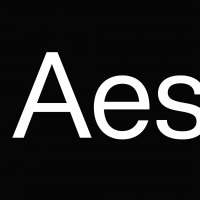Font Modification Restrictions

Michael Jarboe
Posts: 265
With EULA Font Modification restrictions, is the restriction limited to the actual working font file(s)? Do modification definitions ever include font outline data as well? How are modification violations policed by foundries? How are these situations resolved?
Designers outline and modify type for logotypes or other purposes all the time. Are foundries mainly concerned with high-profile uses in these cases?
Designers outline and modify type for logotypes or other purposes all the time. Are foundries mainly concerned with high-profile uses in these cases?
Tagged:
2
Comments
-
I have never seen a license that restricts the modification of vectors once a font is converted to outlines. As far as I know, foundries with these clauses are only trying to discourage the modification of the font itself – the data and outlines within a font format.1
-
What is interesting to me is that if 'Font Software' is defined and encompasses 'design embodied therein' and the clause states that modifications to the font software are prohibited isn't that a gray area? Especially if there isn't a statement that in the case of modifications the 'Font Software' definition doesn't encompass outlined or raster representations of the designs?
1 -
For foundries whose concern with modification lies in the association with a certain level of quality, couldn't modified outlines mimic modified font files? Imagine a high profile usage, limited in the amount of text set, where modification could reasonably occur to outlines as opposed to the actual font files. I know I'm splitting hairs and this example would likely be an edge case, but it seems the concern would be the same whether modification technically occured to outlines or to the actual font files. You could still have the assumption from viewers that the designer and foundry were associated with said modification.0
-
I've read EULAs that include font pixel-renderings in their license, and also do not permit modification. Notably, these are not bitmap fonts.
As a static visual – yes, and designers do this. The effort and pragmatic disadvantages reveal themselves at large-scale: to outline every glyph in a 100-page book, website, or app is going to make a huge file.For foundries whose concern with modification lies in the association with a certain level of quality, couldn't modified outlines mimic modified font files?
To modify just a few glyph outlines in layout software, and anchor them appropriately, would not be so difficult. To apply a transformation (scale, shear etc.), stylization or effect is incredibly painless. In our publishing, the latter happens with disappointing regularity to overcome the limitations of some typesetting technologies. The former also occurs, for icons mostly.
In terms of fair use, you can split hairs or smooth them over. Is the legal challenge worth the costs involved?
0 -
Additionally, some variants of TeX (LuaTeX namely) allows the user to modify the memory representation of the font after loading it from the file, and people have been using it mainly to modify kerning and other glyph positioning rules, or added new glyph substitution rules (I’m not aware of anyone using it to modify glyph outlines). Does this count as prohibited modification?
1 -
Doesn't the Emigre EULA have some crazy clause related to convert-to-outlines? And the House Industries one has some "special" clauses too IIRC. Or maybe they changed after I stopped paying attention.
BTW:
http://typedrawers.com/discussion/1776/modification-briefs-best-practices/p1
http://typedrawers.com/discussion/1785/foundries-allowing-modification
0
Categories
- All Categories
- 46 Introductions
- 3.9K Typeface Design
- 487 Type Design Critiques
- 567 Type Design Software
- 1.1K Type Design Technique & Theory
- 659 Type Business
- 862 Font Technology
- 29 Punchcutting
- 522 Typography
- 120 Type Education
- 325 Type History
- 77 Type Resources
- 112 Lettering and Calligraphy
- 33 Lettering Critiques
- 79 Lettering Technique & Theory
- 559 Announcements
- 94 Events
- 114 Job Postings
- 170 Type Releases
- 180 Miscellaneous News
- 276 About TypeDrawers
- 54 TypeDrawers Announcements
- 120 Suggestions and Bug Reports


